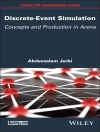This book reviews the literature on hand posture estimation using generative methods, identifying the current gaps, such as sensitivity to hand shapes, sensitivity to a good initial posture, difficult hand posture recovery in cases of loss in tracking, and lack of addressing multiple objectives to maximize accuracy and minimize computational cost. To fill these gaps, it proposes a new 3D hand model that combines the best features of the current 3D hand models in the literature. It also discusses the development of a hand shape optimization technique. To find the global optimum for the single-objective problem formulated, it improves and applies particle swarm optimization (PSO), one of the most highly regarded optimization algorithms and one that is used successfully in both science and industry. After formulating the problem, multi-objective particle swarm optimization (MOPSO) is employed to estimate the Pareto optimal front as the solution for this bi-objective problem. The book alsodemonstrates the effectiveness of the improved PSO in hand posture recovery in cases of tracking loss. Lastly, the book examines the formulation of hand posture estimation as a bi-objective problem for the first time.
The case studies included feature 50 hand postures extracted from five standard datasets, and were used to benchmark the proposed 3D hand model, hand shape optimization, and hand posture recovery.
Table des matières
Introduction to Hand Posture Estimation.- Literature Review of Hand Posture Estimation Techniques and Optimisation Algorithms.- A New 3D Hand Model, Hand Shape Optimization, and Evolutionary Population Dynamics for PSO and MOPSO.- Evaluating PSO and MOPSO equipped with Evolutionary Population Dynamics.- Hand shape optimisation for geometry-based models using EPD-based Particle Swarm Optimization.- Hand recovery for geometry-based models using EPD-based Particle Swarm Optimization.- Hand model estimation considering two objectives using EPD-based Multi-Objective Particle Swarm Optimization.- Conclusion.
A propos de l’auteur
Dr. Shahrzad Saremi is a lecturer at Griffith College, Griffith University, Australia. She received her BA in Information Technology from the Malaysian Multi Media University and M.Sc in Interaction Design from the University of Queensland. Dr. Saremi has published more than 20 articles in high-impact journals. Her main research interests include machine learning, optimization, human-computer interaction, augmented reality and gesture detection.
Dr. Seyedali Mirjalili is a lecturer at Griffith College, Griffith University and internationally recognized for his advances in nature-inspired Artificial Intelligence (AI) techniques. He is the author of five books, 100 journal articles, 20 conference papers, and 20 book chapters. With over 10000 citations and H-index of 40, he is one of the most influential AI researchers in the world. From Google Scholar metrics, he is globally the 3rd most cited researcher in Engineering Optimisation and Robust Optimisation using AI techniques. He has been the keynote speaker of several international conferences and is serving as an associate editor of top AI journals including Applied Soft Computing, Applied Intelligence, IEEE Access, Advances in Engineering Software, and Applied Intelligence.












